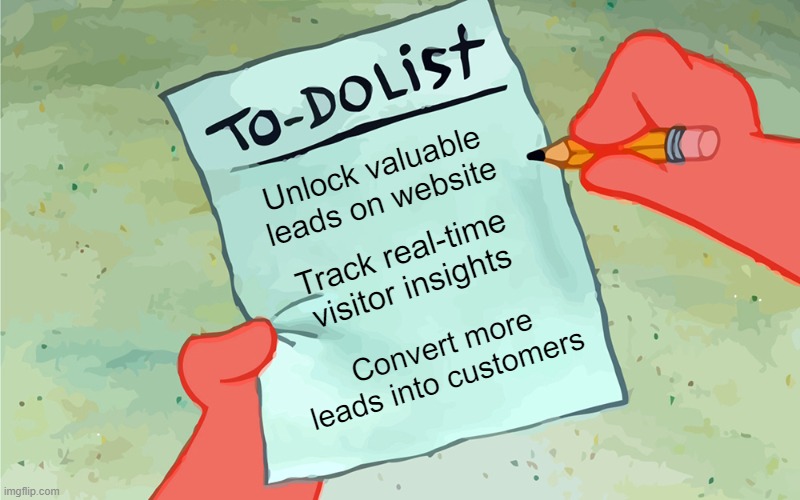Introduction to Website Analytics: Driving Sales with Data
Website analytics track how visitors interact with your website, offering insights into where they come from, what pages they visit, and the actions they take. For sales teams, this data reveals who is interested in your product, which content grabs their attention, and where to focus outreach efforts.
By using this data, sales teams can engage more effectively, personalize outreach, and convert leads with precision. Sounds good, right? Read on to find out more…
Understanding the Role of Website Analytics in Sales
Most businesses use website analytics to enhance marketing efforts, but they can also drive sales performance. By monitoring visitor behavior, sales teams can identify key prospects and engage them at the right time. Analytics provide a deeper understanding of what visitors are interested in, making it easier to tailor outreach strategies and increase the chances of closing deals.
The Basics of Website Analytics
Website analytics offer valuable data that can improve your sales efforts. Key metrics to focus on include:
Visitor Data: Who visits your website, where they come from, and what content they engage with.
Behavior Flow: How visitors navigate through your site. This can help identify what interests them most.
Conversion Rates: The percentage of visitors who take actions like filling out forms or making purchases.
By tracking these metrics, sales teams can make informed decisions about when and how to engage with leads.
How Analytics Can Influence Sales Strategies
Website analytics provide actionable insights that can significantly improve sales strategies. For example, if a lead spends a considerable amount of time on product pages, this is a strong indicator of interest. Sales reps can use this data to follow up with targeted messages, offer demos, or share additional resources—before the lead even reaches out.
By understanding what content resonates with visitors, sales teams can refine their approach and focus on what works.
Key Metrics for Monitoring Sales Performance
When it comes to driving sales, not all website data is equal. To boost performance, focus on the following key metrics:
Traffic Sources: Where visitors come from—whether it’s organic search, paid ads, or social media—helps sales teams prioritize the most effective lead-generation channels.
Conversion Rates: Tracking how many visitors convert into leads or customers shows the effectiveness of your sales funnel. This helps identify areas for improvement.
Sales Funnel Analysis: Monitoring how leads progress through each stage of the sales funnel allows teams to pinpoint where they might be losing prospects and adjust strategies.
Using Insights from Analytics for B2B Sales
For B2B sales teams, website analytics are even more powerful. By using tools like Lead Forensics, sales teams can access detailed insights into which companies are visiting their site, what content they’re engaging with, and how likely they are to convert.
Segmenting Your Audience Using Analytics: Website analytics allow sales teams to break down visitors based on industry, behavior, and engagement levels. This helps prioritize high-value leads and tailor messaging to specific groups.
Tailoring Sales Pitches Based on Analytics: With real-time insights into what products or services a lead is exploring, sales teams can craft personalized pitches that resonate with their needs and interests.

Implementing Data-Driven Decisions in Sales Teams
Data-driven decisions are key to boosting sales performance. To implement website analytics effectively, sales teams should start by setting clear goals. It’s essential to define what you aim to achieve with website analytics and how these insights can align with overall sales objectives. By establishing a clear direction, teams can focus their efforts on the right metrics and strategies.
Another important aspect is using real-time data. Sales reps should have access to up-to-the-minute visitor insights so they can act quickly when a lead shows interest. This immediacy helps them capitalize on opportunities before they pass.
Finally, collaboration between sales and marketing teams is crucial. Both teams need to align around the same data, ensuring that messaging is cohesive and strategies are synchronized. When sales and marketing work together using shared insights, it leads to better lead conversion and more efficient sales efforts.
Best Practices for Sales Teams
To maximize the impact of website analytics, follow these best practices:
Anticipate Customer Needs: By analyzing visitor behavior, sales teams can predict what products or services a lead is interested in and offer relevant information at the right time.
Track Engagement Over Time: Monitor how leads interact with your site, not just at the moment of conversion. This helps identify trends and follow up at the best times.
Integrate Analytics with CRM: Use CRM systems in combination with website analytics to create a comprehensive view of each lead’s journey.
Tools and Technologies for Website Analytics
To optimize sales performance, it’s essential to use the right tools and technologies that can provide deep insights into website visitor behavior. Several powerful tools are available to help sales teams track and analyze website analytics, making it easier to identify opportunities and improve conversion rates.
By uncovering the identity of previously anonymous website visitors, Lead Forensics provides valuable insights into who’s engaging with your website, what content they’re interacting with, and how they found you. This real-time data can be used to segment and prioritize high-value prospects, allowing sales teams to focus their efforts on leads that are more likely to convert into customers.
In addition to identifying leads, Lead Forensics also integrates with your existing CRM system, providing a seamless flow of information between sales and marketing teams. This integration allows for better lead scoring, streamlined follow-ups, and a more personalized sales approach. Sales reps can track key engagement actions, such as form submissions or demo requests, and tailor their outreach based on the specific interests of each lead.

Case Study of a Successful Sales Team Using Website Analytics
Pure PCB is a leading provider of high-tech printed circuit board (PCB) production and interconnect solutions for various industries. They were looking for ways to increase their sales and generate more RFQs (Requests for Quotation) from potential customers. They needed a solution to identify website visitors and obtain their contact details, particularly email addresses, to engage effectively.
By implementing Lead Forensics, Pure PCB was able to capture critical visitor data, including email addresses, of prospects they would not have known about without the software. This access to real-time, detailed insights allowed Pure PCB’s sales and marketing teams to proactively reach out to high-value leads. With tailored communications based on website behavior, the company saw a significant increase in the number of RFQs and ultimately boosted its sales.
The software’s real-time data also helped Pure PCB identify trends in customer behavior and adjust their marketing strategies accordingly. This enabled the company to optimize their sales process, creating new opportunities for growth. By using Lead Forensics, Pure PCB not only improved lead engagement but also increased conversion rates, showcasing the powerful impact of website analytics on sales performance. Read the full case study here.
Conclusion: The Future of Sales with Website Analytics
Website analytics are a powerful, yet often underutilized, tool for sales teams. By using these insights, sales teams can improve their performance, personalize outreach, and increase conversions. As the digital landscape evolves, integrating website analytics into your sales strategy will be crucial for staying ahead of the competition.
Ready to uncover valuable leads on your website? Start using Lead Forensics today to gain real-time insights into visitor behavior, boost your sales team’s performance, and convert more leads into customers. Get started now!







